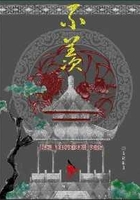"If report speaks truly,the number of the princesses and concubines amounts to seven hundred."Abdur Razzak gives a glowing account of the brilliancy of a great festival of which he was a spectator while in the capital.He calls it the Mahanavami[145]festival,but I have my doubts as to whether he was not mistaken,since he declares that it took place in the month Rajab (October 25to November 23,1443A.D.).The Hindus celebrate the MAHANAVAMI by a nine days'festival beginning on Asvina Sukla 1st in native reckoning,that is,on the day following the new moon which marks the beginning of the month Asvina;while the New Year's Day at that period was the first day of the following month,Karttika (if the year began,as it certainly did at Vijayanagar in the time of Paes,eighty years later,on 1st Karttika).But the new moon of Rajab in A.D.1443corresponded to the new moon of KARTTIKA,not to that of ASVINA.[146]Either,therefore,the festival which he witnessed was the New Year's Day festival,or the traveller was in error in giving the month "Rajab."It seems most probable that the former was the case,because he apparently makes the festival one of only three days'duration,whereas the MAHANAVAMI,as its name implies,was a nine days'feast.But there is also another difficulty.The MAHANAVAMI celebrations began with the new moon,whereas Razzak says that the festival he saw began with the "full moon."This,however,may have been due to a slip of the pen.
However that may be,he certainly was a spectator of a brilliant scene,and I append his account of it.
"In pursuance of orders issued by the king of Bidjanagar,the generals and principal personages from all parts of his empire ...presented themselves at the palace.They brought with them a thousand elephants ...which were covered with brilliant armour and with castles magnificently adorned....During three consecutive days in the month of Redjeb the vast space of land magnificently decorated,in which the enormous elephants were congregated together,presented the appearance of the waves of the sea,or of that compact mass which will be assembled together at the day of the resurrection.Over this magnificent space were erected numerous pavilions,to the height of three,four,or even five storeys,covered from top to bottom with figures in relief....Some of these pavilions were arranged in such a manner that they could turn rapidly round and present a new face:at each moment a new chamber or a new hall presented itself to the view.
"In the front of this place rose a palace with nine pavilions magnificently ornamented.In the ninth the king's throne was set up.In the seventh was allotted a place to the humble author of this narrative....Between the palace and the pavilions ...were musicians and storytellers."Girls were there in magnificent dresses,dancing "behind a pretty curtain opposite the king."There were numberless performances given by jugglers,who displayed elephants marvellously trained.
During three consecutive days,from sunrise to sunset,the royal festival was prolonged in a style of the greatest magnificence.Fireworks,games,and amusements went on.On the third day the writer was presented to the king.
"The throne,which was of extraordinary size,was made of gold,and enriched with precious stones of extreme value....Before the throne was a square cushion,on the edges of which were sown three rows of pearls.During the three days the king remained seated on this cushion.When the fete of Mahanawi was ended,at the hour of evening prayer,I was introduced into the middle of four ESTRADES,which were about ten ghez both in length and breadth.[147]The roof and the walls were entirely formed of plates of gold enriched with precious stones.Each of these plates was as thick as the blade of a sword,and was fastened with golden nails.Upon the ESTRADE,in the front,is placed the throne of the king,and the throne itself is of very great size."The deions given by these travellers give us a good idea of the splendours of this great Hindu capital in the first half of the fifteenth century;and with this in our minds we return to the history of the period.














